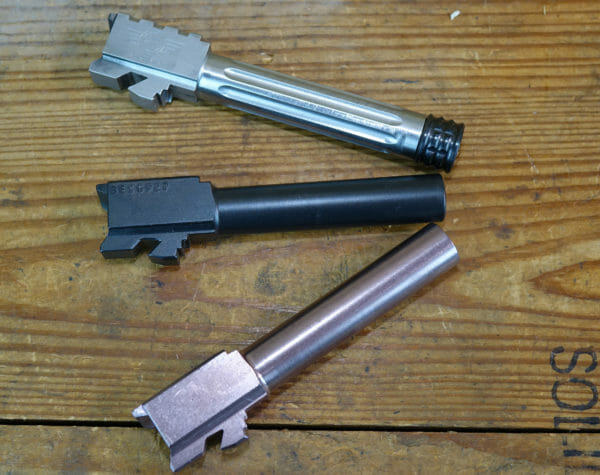USA – -(Ammoland.com)- Glock pistols are everywhere for a variety of reasons. When looking for a first, or umteenth pistol it can be tempting to get into (or another) Glock, but is that a wise decision? Let’s explore the pros and cons of Glock pistols from a non-fanboy perspective. A Gen 3 Glock 19 was my first real carry gun after moving back to the US nearly a decade ago and it started me on an expensive learning path.
Glock Pistol Reliability
Glock was neither the first striker-fired pistol, nor the first to use a polymer frame, but it sure feels like they were. Through aggressive marketing and some clever lack of evolution, Glocks are about as ubiquitous as a Toyota Camry or Heinz Ketchup. Lore is that they undercut the competition significantly to win early police contracts and that’s believable as a polymer-frame is much less expensive to make than machined steel or aluminum that was more common at the time. Glock pistols are infinitely reliable and simple enough to build that most people can assemble the gun or replace parts without any formal gunsmith education.

Ease of parts replacement combined with what some would consider lackluster ergonomics and trigger, plus decades without any significant design changes lead to an explosion of aftermarket options. Now aftermarket solutions can be found everywhere from budget-friend Bear Creek Arsenal barrels to completely re-engineered elite pieces of art from L2D Combat if there’s a part of a Glock there are dozens of aftermarket replacement options. I can think of no other top of the line handgun brand that has such a massive aftermarket fanbase supporting it, but why?

To GLOCK or NOT?
This is where some feelings may be hurt. Glock let decades go by without making significant design changes and for justifiable reasons. As the saying goes, “If it ain’t broke don’t fix it” so Glock did (or didn’t?). The pistols work, the tooling was already paid for, and the guns kept selling. In the meantime, profits could be spent on things like the Glock Equestrian Center (which also sells horse semen if you’re in the market) and the company enjoyed stunning success. During that time, however, the competition continued to advance and as a result, some consumers found themselves wanting a little more out of their gun.
When front slide serrations became popular the aftermarket responded, the same with lightening cuts, optics-mounting solutions, and of course who could forget a replacement for those plastic sights! Triggers are also easily “remedied” from dozens of aftermarket companies all promising to fix that squishy Glock feel. They may or may not improve the gun in your mind, but the options are out there, and therein lies the rub.
While a major plus to the Glock platform is the ease of both parts availability and at-home modifications, the cost adds up. When I finally got my Glock 19 to where I personally wanted it I realized I had more than doubled what I had in the gun and merely patched the issues that I could have avoided by simply getting a different gun. Would I have known any better had I started with something other than what the local gun store clerk pushed in my face? Probably not. I’m grateful for the learning journey that used Gen 3 Glock 19 put me on, and still have that pistol today, but it is not my carry gun nor have I taken it to the range in some time. What do you think of your GLOCK pistol?
See more at www.us.glock.com
About Graham Baates
“Graham Baates” is a pen name used by a 15-year active Army veteran who spent most of his time in the tactical side of the Intelligence community including tours in Afghanistan and Iraq. Post-Army Graham spent some time in the local 3-Gun circuit before becoming a full-time NRA Certified defensive handgun instructor and now works as an industry writer while curating a YouTube channel on the side. Visit Graham on Youtube .
